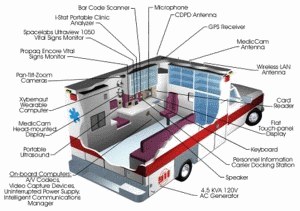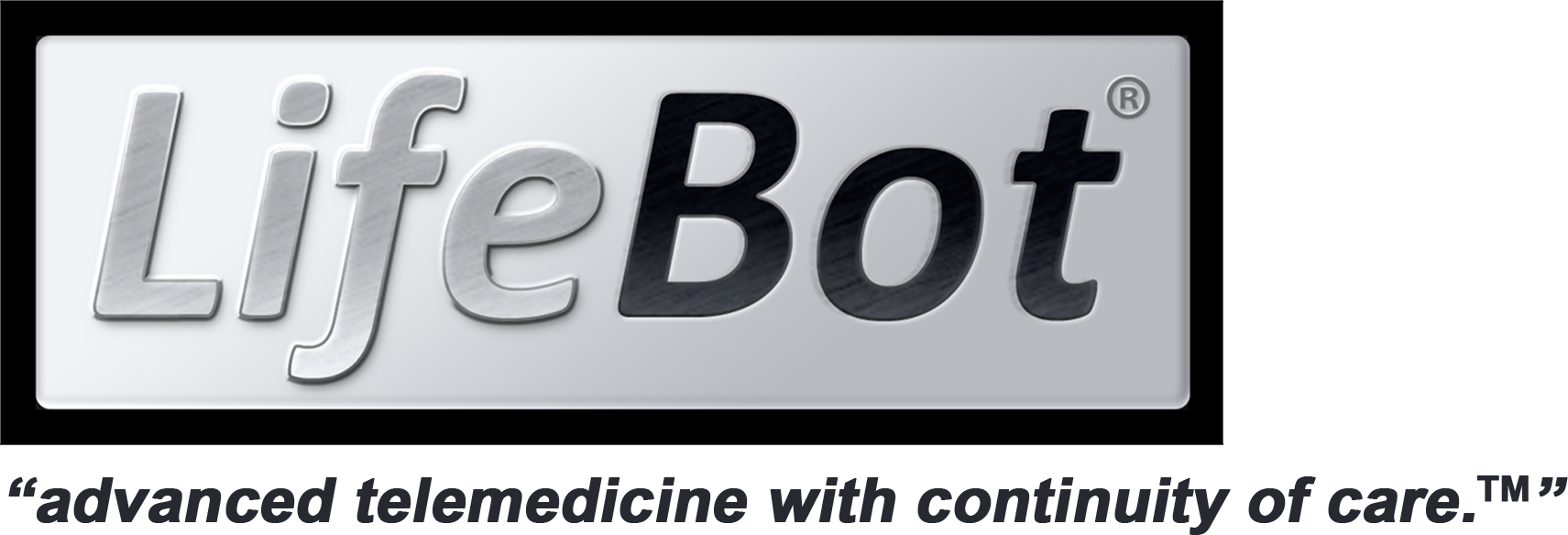
What do you get when you invest $14 million and 6 years of field tests in an emergency medical services telemedicine system? You get DREAMS™ – Disaster Relief and Emergency Medical Services – described as the most advanced EMS telemedicine system in the world. The $14 million came from the U. S. Army Medical Research and Materiel Command and the Telemedicine and Technology Research Center (TATRC) through a Congressionally Funded military research project. The six years of field tests were done in Liberty County Texas. LifeBot® is the company bringing DREAMS™ to the public safety, EMS, and hospital emergency medicine markets. I had the pleasure to interview Dr. James “Red” Duke and Roger Heath recently about DREAMSTM and what this solution can do for emergency medicine.
What do you get when you invest $14 million and 6 years of field tests in an emergency medical services telemedicine system? You get DREAMS™ Bob Pessemier
DREAMS™ is a complete telemedicine system to connect EMS field units to hospitals and doctors who may be hundreds of miles away and spread out across the country or across the globe. You can transmit voice, video, patient data, and even instruct field personnel on medical procedures. The system integrates voice, video, data, wireless networking, and radio-telephone communications systems.
The solution can be installed in ambulance or EMS units to create a Super Ambulance or Mobile Primary Care Unit and can also be used by field personnel on an HP Slate 500 tablet PC. Hospitals can connect the emergency department with the field units using the HP TouchSmart 9100 in the hospital.
The goal of the system is to provide better triage, diagnosis, and treatment on the scene. DREAMS™ is designed to help public safety agencies and hospitals save lives, lower liability risk, and reduce costs.
Solution Overview:
DREAMS™ is a complete telemedicine system to connect EMS field units to hospitals and doctors who may be hundreds of miles away and spread out across the country or across the globe. You can transmit voice, video, patient data, and even instruct field personnel on medical procedures. The system integrates voice, video, data, wireless networking, and radio-telephone communications systems.
The solution can be installed in ambulance or EMS units to create a Super Ambulance or Mobile Primary Care Unit and can also be used by field personnel on an HP Slate 500 tablet PC. Hospitals can connect the emergency department with the field units using the HP TouchSmart 9100 in the hospital.
The goal of the system is to provide better triage, diagnosis, and treatment on the scene. DREAMS™ is designed to help public safety agencies and hospitals save lives, lower liability risk, and reduce costs.
For Example:
Let’s say you have a Medic unit set up with the DREAMSTM solution and they respond to a car accident that is 100 miles from the nearest hospital. Doctors will be able to view the patient and their injuries with one of the three cameras mounted in the unit and the even view the scene so they can determine method and extent of injuries. They can look up patient records from a hospital database and consult in real time with a hospital trauma department. Patient vital signs and other telemetry data are transmitted to the hospital. A doctor in the trauma center could help the paramedics close a large laceration (something they are not trained to do) that is critical to a patient’s survival. Triage and patient care becomes much more effective and efficient. They can also communicate with anyone they need to even if they are on a cell phone, land line, or a completely different radio system.
What Sets Them Apart:
A major differentiator of DREAMSTM is that it is an all-in-one integrated system designed to work seamlessly from the field to the hospital in any technology environment. This system was used for six years in Liberty County Texas and is the only telemedicine system used in actual disasters (Katrina, Rita, Ike).
The people behind this solution are also unique. Dr. James Duke is a renowned trauma surgeon, introduced the first helicopter life flight program in the U.S., attended to Governor Connally’s wounds during the JFK assassination, and hosted the former PBS series, “Bodywatch”. His credentials and involvement in EMS is on the scale of legendary.
Roger Lee Heath is an entrepreneur and inventor who is credited with bringing the Automated External Defibrillator (AED) to the EMS world. Mr. Heath is another legendary figure in telemedicine technology.
Dr. S. Ward Cassells received the General Maxwell Thurman Award for his participation in the design of the DREAMS Digital Ambulance telemedicine system, is the former Assistant Secretary of Defense (Health Affairs), and is the John E. Tyson Distinguished Professor of Medicine and Public Health, and Vice President for External Affairs and Public Policy at the University of Texas at Houston, and Senior Scholar at the Texas Heart Institute.
The contribution these three have made to health care and telemedicine over the years is very impressive. They should know what they are doing with LifeBot and DREAMS.
Client Quote:
“Through our close collaboration with innovative technology leaders like LifeBot, HP mobile technology products bring physicians closer to the point of care, regardless of their location. In the back of an ambulance where every second counts, this type of technology is particularly critical, said Chris Mertens, vice president, Healthcare, Personal Systems Group, HP. “Combining our HP Slate 500 and HP TouchSmart PCs with Lifebot’s DREAMS™ ambulance teletriage system is revolutionizing speed of care in emergency health situations and truly saving lives.”
From Roger Heath: “DREAMStm has many applications beyond ambulance telemedicine – the software can be used on hospital mobile telemedicine carts and desktops, or by neurologists on LifeBot’s hub and spoke system to meet American Heart Association recommendations for telestroke. DREAMStm can expand those capabilities to include teletrauma, e-ICU, and disaster management. With the 1.5 pound HP Slate tablet PC, a physician or intensivist can remotely connect hospital-to-hospital or hospital-to-ambulance from almost anywhere, and at any time, to save lives. Call centers, or “telemedicine hubs” may quickly triage and dispatch higher levels of care. Improved communications and care coordination provides for new efficiencies significantly lowering healthcare delivery costs.”
View full Article on Emergency Management
